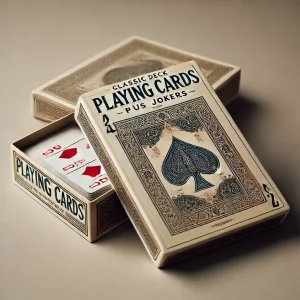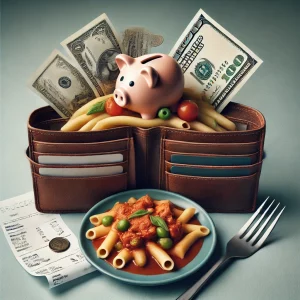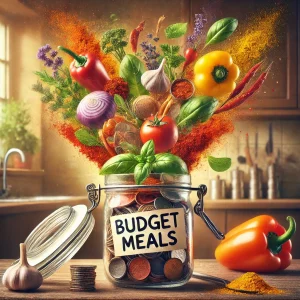
Charlie: Hey there! It’s Charlie—your culinary co-pilot for affordable fun and emotional restraint.
And beside me, as always, is Sally. She’s the queen of craft booths, live music, and misunderstandings involving spicy chicken dinners.
Sally: Okay. Once again, for the record: I made Max a perfectly innocent dinner. It wasn’t a date, it wasn’t candlelit, and it definitely wasn’t spicy.
But I get it.
Feelings were felt. So to clear the air and keep things light, Charlie and I are heading out next weekend for some good old-fashioned family fun. And no kitchen drama.
Charlie: That’s right—we’re talking about the Spring Jamboree, happening May 3rd and 4th in beautiful Boulder City.
If you’re looking for family fun that doesn’t drain your wallet, this is your golden ticket.
Sally: Admission? Free. Parking? Free. Entertainment? Free.
The chance to eat a deep-fried Twinkie while watching a dachshund in a superhero costume strut across a pet parade stage?

Priceless family fun!
Charlie: You’ll find local artisan booths, handmade goods, quirky collectibles, and more face-painted kids per square foot than a birthday party in a bounce house.
There’s also a classic car show, live music, and a rock, gem, and mineral expo—because nothing says romance like buying your co-host a slightly cracked geode.
Sally: That sounds suspiciously like a plan, Charlie.
And let’s not forget the food vendors—tacos, kettle corn, lemonade stands, and possibly the best corndogs west of the Mississippi.
For anyone looking to indulge in family fun with a side of mustard, this is the spot.
Charlie: It’s also a great reminder that not every good time has to come with a $200 price tag and a valet.
Family fun near Las Vegas can be laid-back, homespun, and wonderfully weird. And Boulder City nails it.

Sally: We’ll be covering it all for Informer.Digital, of course—documenting the flavors, the fashion choices, the unexpected emotional landmines, and everything else that comes with two coworkers spending a weekend together pretending they’re totally, 100% just friends.
Charlie: To avoid any more Max-related confusion, I made it clear up front: “No spicy chicken dinners. No signals to misread. Just you, me, and a park full of kettle corn.”
And that’s the plan.
Family fun with a healthy side of boundaries.
Sally: Sure, Charlie.
Boundaries.
Until you try to win me a souvenir crystal shaped like a squirrel.
Charlie: Let me dream, Sally.
Sally: If you’re in the area, put the Spring Jamboree on your calendar.
It’s the definition of family fun and it’s the perfect way to shake off the stress without shaking out your pockets.
Charlie: Look for us in Bicentennial Park—we’ll be the ones bickering near the churro cart and pretending we’re not low-key having the best time ever.
And if you’ve got kids, or a soft spot for miniature horses in costumes, or just want a Saturday that feels like a slice of Americana? This event’s calling your name.
Sally: Catch us next weekend at the Spring Jamboree—celebrating budget-friendly, wholesome, weird, wonderful family fun.
And remember: just because it’s free, doesn’t mean it’s not magic.
Charlie: Especially if you’re there with someone who makes kettle corn taste like a second chance.
Sally: Charlie.
Charlie: Sorry. Boundaries. Got it.
Sally: Yes there are boundaries. Which begs the question why did you say there’s some Shakespeare happening this Friday at Bicentennial Park?
Charlie: That’s right—The Comedy of Errors, outdoor performance, under the stars. Free. A perfect warm-up for the Jamboree. You know, just to get a feel for the park. For work purposes.

Sally: Uh-huh. And is this suggestion your way of being spontaneous with me?
Because we just agreed—strictly friends, strictly funnel cakes.
Charlie: It’s Shakespeare, Sally. Mistaken identities. Twins. Hijinks. If that’s not a metaphor for our working relationship, I don’t know what is.
Sally: Fine. But if you try to hold my hand during the second act, I’m calling Max.
Charlie: I’d never. Unless there’s swordplay. Then all bets are off.
]]>
Sally:
“Hey there, flavor lovers—welcome back to Flavor on a Budget, the show where we cook up amazing meals that keep your wallet full and your taste buds happy!”

Charlie:
“And sometimes, we take an easy budget recipe and accidentally torch a situationship or two.
I’m Chef Charlie, she’s Sally, and today we’re serving up one spicy entrée in more ways than one.”
Sally (smiling, stirring a skillet):
“Today we’re making one of my favorite budget friendly dishes—Spicy Lemon Herbal Chicken.
It’s easy, bold, affordable, and apparently… controversial.”
Charlie (grinning):
“Oh, you mean the spicy chicken? As in, the easy spicy chicken you made for Max?”
Sally (eyebrows up):
“Here we go. Yes, Charlie. Same easy budget recipe. But for the record, I didn’t make it for him. He had it at Johnny’s and I said I could make it for less and it would be easy. I made it as a challenge. And he ate it.”
Charlie:
“Mmhmm. And then Dana found out, and Max had to sleep on the couch.
You can’t just go cooking relationship-wrecking marinades for people’s boyfriends.”
Sally (coolly):
“Well actually, for the record—they’re not exclusive. So Max didn’t sleep on the couch. He slept at his place.”
Charlie (pausing):
“Wait a minute—how do you know they’re not exclusive? I thought this was just a friendly dinner.”
Sally (stirring with extra emphasis):
“It was a friendly dinner. That doesn’t mean I don’t have ears.”
Charlie (half-smiling, half-hurt):
“Right. A friendly, easy budget dinner.
Got it.
Let’s just teach people how to make it before someone tosses this skillet through the window.”
Sally:
“I don’t understand why you are so upset Charlie. We have never been a thing.”
Charlie (whispering):
“Not a spicy thing with easy budget spicy dishes being cooked. But I thought there was an…understanding.”
Sally (out of the side of her mouth):
“Can we help the viewers understand how to cook Easy Budget Spicy Lemon Herbal Chicken–and save our feelings for the fridge?

Here’s what you need.”
Sally’s Spicy Lemon Herbal Chicken
Total Budget: Under $8 | Serves 2–3 (or one Max-sized problem)
 Ingredients (Per Tenderloin):
Ingredients (Per Tenderloin):
1 tsp lemon juice – $0.10
1/2 tsp melted butter or olive oil – pantry item
1/4 tsp Cajun seasoning – pantry item
Pinch of garlic powder
Pinch of dried thyme or rosemary
Tiny pinch of salt & pepper
(Optional: lemon zest for bonus flair)

Main Ingredients:
Chicken tenderloins (1 lb) – approx. $4.99
Boil-in-bag rice or pasta (2–3 servings) – $1.50
Lemon – $0.79
Total Estimated Cost: $7.28
How to Make It
Sally:
“This is a super easy budget recipe that looks way more impressive than it is—ideal if you’re feeding a friend, a maybe-not-boyfriend, or just yourself with excellent taste.”
Mix all marinade ingredients in a bowl.
Toss chicken in the mixture and refrigerate for at least 5 hours. Overnight = maximum flavor.
Heat a skillet and pour in the chicken and marinade.
Make sure to bring it to a rolling boil for 10 minutes—no raw drama allowed.
Reduce heat and simmer until tender and sauce is thick.
Serve over rice or pasta. Optional garnish: fresh herbs, lemon wedge, or a sticky note that says “For Friends Only.”

Charlie:
“You know, this would pair great with some grilled zucchini or cornbread—something budget friendly and comforting in case emotions get overcooked.”
Sally:
“Honestly, the only thing that got burned here was Charlie’s assumption.”
Charlie:
“I’m just saying—next time label your leftovers. You can’t hand out flavor on a budget like that without stirring the pot.”
Sally:
“Flavor on a Budget doesn’t cause drama. People do.”
]]>
Max:
“You know what this living room needs? A giant rolling boulder, a snake pit, and at least one priceless relic I probably shouldn’t touch but will anyway. This is peak Indiana Jones energy right here.”
Dana:
“Peak Indiana Jones? Please. You’re barely pulling off community college archaeology vibes. I’m the one who actually scales walls, solves ancient puzzles, and does it all in perfect hair and boots. Lara Croft doesn’t wait for permission—she raids.”
Max:
“Right. And I’m sure Lara Croft’s idea of ‘DIY’ includes yoga and tactical weaponry. Meanwhile, I’m over here turning a deck of cards and some dice into a full-blown Indiana Jones adventure game—with zero budget and maximum thrill.”
Dana:
“Funny you say that—I actually got the idea after reading that virtual travel adventure with Nelly and the Professor.
They were talking about real-life relics and archaeological finds, and I thought, ‘Why not turn that thrill into a DIY game night?’ Next thing I knew, I was digging through our card stash like it was the Temple of Doom.”

Max (grinning):
“Yeah, well around here it’s been the Temple of Drama lately—ever since that Jack and Polly duet hit the air. You’d think they solved world peace in three verses and a key change.”
Dana (tilting her head):
“You know what? I’m actually starting to understand how Aurora feels. Because I just found out about the very nice dinner you had the other night—with Sally. Is that right?”
Max (blinking, caught):
“Oh—that? I mentioned to Sally that I had this spicy lemon herbal chicken and rice at Johnny’s Place, and she was like, ‘I can totally make that. Better and on a budget.’ It turned into a cooking challenge.
That’s all it was—just dinner. Friendly.”
Dana:
“Mmm. Just friendly. Cute.”
Max:
“Well… we’re not exclusive.
That’s what you said, right? Or… are we rewriting that mid-recipe?”
Dana (cool and surgical):
“You can have your spicy little dinner with whoever you want to. Let’s just keep going with the game.”
(Beat.
Max picks up the dice.
Dana doesn’t break eye contact for a full second longer than necessary.)
Welcome to Relic Raiders: Your DIY Indiana Jones & Lara Croft Adventure
Dana:
Ready to channel your inner tomb raider or fedora-wearing relic chaser? This DIY Indiana Jones game lets you chase artifacts, outsmart danger, and work as a team—all from your living room.
What You’ll Need:
A standard 52-card deck + 2 Jokers
Five six-sided dice
Pen and paper for turn tracking (or just scrawl “Temple Day 1” on a napkin)
Your best Lara Croft glare or Indiana Jones smirk
Setup:
Max:
Shuffle the deck and place it in the center as your draw pile.
Each player draws 2 cards to start their hand.
Everyone rolls all five dice once to determine their Skill Level Bonus:
10–22 = +1
23–27 = +2
28–30 = +3
After that, each player gets one die for regular gameplay.
Set a turn limit (we recommend 20 turns) to simulate the race-against-time feel of any great Indiana Jones movie.
Gameplay:
Dana:
On your turn, draw a card. Here’s what you might find in your tomb of mystery:
2–10: Resource cards. These add +1 to your dice total during challenges.
Face Cards (J, Q, K):
Jack: Re-roll one die during a challenge.
Queen: Draw one extra card.
King: Cancel one failed Danger Event penalty.
Ace: That’s a relic, baby! But you’ve got to pass the Artifact Retrieval Challenge.
Joker: A Danger Event! Cue the dramatic music and panicked yelling.
Artifact Retrieval Challenge:

Max:
This is where the DIY Indiana Jones magic happens.
When an Ace is drawn, place it face-up in the center.
All players roll their dice and combine their totals.
Add Skill Level Bonuses and Resource Cards.
If the group total hits or exceeds the target, you win the artifact.
First Artifact: 25
Second: 30
Third: 35
Fourth: 40
Dana:
If you fail? The artifact stays put—and you discard 2 cards from the draw pile. Yep, that priceless relic might vanish forever, just like in every Lara Croft escape sequence.
Danger Events (Jokers):
Dana:
You pull a Joker, you get drama.
Players roll together to hit 30+ total.
Add Resource Cards and Skill Level Bonuses.
If you fail, discard 4 cards from the deck—your team just “lost time,” “got caught in a trap,” or had an “Indiana Jones rope snap moment.”
Winning the Game:
Max:
Retrieve all 4 relics before the deck runs out or you hit the turn limit. Fail, and it’s game over, Indy. And possibly game over for the world.

Dana:
This is the kind of DIY Indiana Jones experience that belongs on your table. It’s packed with excitement, improvisation, and all the thrills of a Lara Croft mission—minus the plane tickets and ancient curses.
Max:
Whether you’re raiding tombs or dodging danger with nothing but a Jack and a lucky dice roll, this is one of the best DIY games we’ve cooked up. Now roll the dice, cue the soundtrack, and grab your hat. Adventure waits.
]]>
Max (grinning, tossing a card down):
“You know, Dana, I watched Nestor and Al’s last episode on legendary heist movies—and I’ve gotta say, The Italian Job still holds the crown for me.
I mean, car chases, Mini Coopers, gold bars… it’s got everything. That’s the kind of energy I want in a DIY heist game.”
Dana (smirking, tapping her cards thoughtfully):
“I do love a good heist movie, Max. But my favorite’s always been To Catch a Thief. He’s not pulling the job—he’s trying to clear his name. There’s something extra fun about flipping the script like that.”

Max (nodding):
“Yeah, that is a cool twist. Innocent guy, everyone thinks he’s guilty, and he’s got to outsmart them all to prove it.”
Dana:
“Exactly. That twist got me thinking—we should design a DIY heist game where you’re not the thief pulling the heist… you’re the one trying to prove you didn’t do it.”
Max:
“What a great idea we both just had. Another classic ‘Dana and Max co-op.’”
Dana (grinning):
“Fair enough. So let’s show ‘em how to play…”
Dana (leaning in conspiratorially):
“This DIY heist game starts with a simple setup: one standard 54-card deck. Your mission? Remove all 13 Spades—those are the false accusations—without ever holding three at once.”
Max:
“Which is tougher than it sounds! Especially when you’re trying to build combinations with Clubs as witnesses, Diamonds as alibis, and Hearts as physical evidence. Basically, it’s like building your defense case with a deck of cards… and wild Jokers.”

How to Play the DIY Heist Game: “Prove Your Innocence”
Deal 5 cards face-up. If you start with 3 or more Spades, reshuffle.
Draw 1 card each turn, max hand size is 7.
Remove Spades using combos:
4 Clubs = 1 Spade gone
3 Diamonds = 1 Spade gone
2 Hearts = 1 Spade gone
Jokers are wild—they help complete any combo.
Ace, Jack, Queen, and King of Spades need special combos, including face cards or a Joker.
The game ends when all Spades are gone—or you lose if you hold 3 Spades or can’t make a play with 7 cards.
Max (pretending to shuffle dramatically):
“I like to play aggressively. Stack those Diamonds early, hold onto a Joker, and hit the high-value Spades head-on. That’s how you win this DIY heist game. Fast and flashy.”
Dana (smiling knowingly):
“Flashy gets you caught, Max. Strategic timing wins. I save my Clubs and wait until I’ve got the Ace of Spades lined up. Patience is key in a good DIY heist game.”
Budget-Friendly Fun with a Thematic Twist
One of the best things about this DIY heist game? You don’t need to buy anything.
No expensive board, no app download, just a regular deck of cards and a little imagination.
It’s perfect for budget-friendly game nights or even a themed movie-food-game evening.
Dana:
“To Catch a Thief takes place on the French Riviera so let’s set out some French cheese and crackers, and bring the suspense to life.”

Max:
“Or go full Fast and Furious mode—blast the soundtrack, sip on a mocktail called ‘Vin’s Vengeance,’ and see who clears their name first in this DIY heist game.”
Multiplayer Variant: Who Clears Their Name First?
With two or more players, take turns drawing cards and forming combos. Whoever removes the most Spades wins. Bonus points for dramatic accusations and pretending you’re under investigation in Monte Carlo.
Final Thoughts from Dana and Max:
Dana:
“I love that this DIY heist game makes you think like a detective, not just a thief. It’s got depth, strategy, and it doesn’t cost a cent.”
Max:
“And let’s be honest—it lets us pretend we’re in a slick heist movie. You bring the charm, I bring the chaos. Perfect combo.”
Dana (with a raised eyebrow):
“Although… this game might hit a little close to home for anyone trying to prove they didn’t fall in love at the Spotlight Lounge last Saturday night.”
Max (laughing):
“Oh yeah. Jack and Polly might need a few extra Jokers in their deck if they want to beat that gossip train.”
Dana:
“Too bad this isn’t the French Riviera—though the break room at Informer.Digital might be just as ruthless.”
]]>
 The Ultimate Football Card Game for an Unforgettable UFL Season Kickoff! DIY Dana & Max #3
The Ultimate Football Card Game for an Unforgettable UFL Season Kickoff! DIY Dana & Max #3
Dana:
“Max, I just read Gracie and Jack’s article about the UFL season starting this weekend, and I have to admit—those two make football predictions sound like a heavyweight title fight.”
Max:
“Right? Jack’s out here throwing Hail Mary predictions like he’s got a magic football, and Gracie’s analyzing stats like a human supercomputer. It’s Spotify vs Apple Music every week.”
Dana:
“Jack and Gracie are good at what they do, but—you and I need a way to prove our own football expertise.”
Max:
“Glad you said that, because I’ve got the perfect way: we’re playing our very own football card game!”
Dana:
“Oh, great. Another excuse for you to talk trash while I systematically destroy you.”
Max:
“See? You get it! And the best part? Unlike overpriced streaming services making you pay for every single football game, this one is completely free.”
Dana:
“And this is where I find out how much you actually know about football strategy.”
Max:
“Well, if I lose, I’ll just blame the refs.”
Dana:
“Max, this is a card game. There are no refs.”
Max:
“Then it’ll be a conspiracy against me.”
 The DIY Football Card Game – Play Anytime, Anywhere!
The DIY Football Card Game – Play Anytime, Anywhere!
This game is easy to learn, fast-paced, and perfect for game nights, tailgating, or just proving who’s the real football genius in your crew. All you need is a standard deck of cards and a competitive spirit.

 Football Card Game
Football Card Game
Using a Standard 52-Card Deck (Plus Jokers)
Objective:
Score points by stringing together successful plays to sustain the drive and choosing whether to go for field goals or touchdowns, using a combination of offensive and defensive plays represented by cards.
Setup:
Shuffle the 54 cards (52 standard cards + 2 jokers) and deal 12 cards face down to the side; these cards will not be used in this hand. Each hand represents one quarter of a football game.
Each player is dealt 7 cards to start the game. The remaining deck is the draw pile.
Spades represent offensive run plays.
Clubs represent offensive pass plays.
Hearts represent defense designed to stop the run.
Diamonds represent defense designed to stop the pass.
Jokers are turnover cards.
Game Play:
The non-dealer goes first, playing either a Spade (run) or a Club (pass).
The opposing player must play the corresponding defensive card of equal or higher value to stop the offensive play:
For a Spade (run play), play a Heart of equal or higher value.
For a Club (pass play), play a Diamond of equal or higher value.
(After each card is played the player draws a card from the draw pile, the offense draws first, to maintain a hand of 7 cards.)
If the defensive card is lower than the offensive card, or if the player on defense does not have the appropriate suit to stop the run or pass then the defensive player must still play a card and the offense is successful (aka: a first down), and the drive continues.
The offensive player must string together four first downs in a row to score a touchdown (6 points).
After two successful plays/first downs in a row, the offense can elect to kick a field goal (3 points) instead of continuing toward a touchdown.

Scoring Options:
Field Goal: After achieving two successful plays/first downs in a row, the offensive player may choose to kick a field goal worth 3 points. This ends the possession, and the other player begins on offense.
Touchdown: If the offensive player achieves four first downs in a row, they score a touchdown worth 6 points. After scoring a touchdown the offensive player can elect to just accept an automatic extra point for a total of 7 points or they can elect to attempt a two-point conversion.
Two-Point Conversion: After a touchdown, the offense can attempt a two-point conversion by playing one additional card. The defense gets a +2 bonus to their card value on this play to stop the conversion.
If the offense elects to continue after 2 successful plays/first downs and then is unsuccessful on either the Third or Fourth play NO POINTS are scored and possession goes to the other player.
Turnover/Loss of Possession:
If the defense plays a card of equal or higher value than the offensive card, the play is unsuccessful, and possession changes to the opposing player.
If the defense plays a Joker, the offense immediately loses possession, regardless of the offensive card played. A Joker acts as an automatic turnover.
Special Cards/Rules:

The Jack as a Universal Stopper:
The defense can use a Jack to stop any offensive play regardless of its value, but it must match the corresponding suit (Hearts for Spades, Diamonds for Clubs). The Jack is played after the offense plays their card.
The Queen as an Explosive Play:
After achieving two successful plays/first downs the offensive player can play a Queen (of either Spades or Clubs) as an Explosive Play. If the defense fails to stop the Queen (using a Joker or the Jack or higher of the correct suit Hearts for Spades, Diamonds for Clubs), it results in an immediate touchdown after only three successful plays/first downs instead of four.
Two-Point Conversion:
After scoring a touchdown, the offensive player may attempt a two-point conversion. The defense gets a +2 bonus to their card during this play. For example, if the offense plays a 10 of Spades, and the defense plays an 8 of Hearts, the defensive card is boosted (+2) to 10, and the conversion is stopped.
No Offense Cards:
If the player on offense runs out of offense cards (Spades or Clubs) they can no longer sustain the drive. They must play one of the red cards in their hand to signify a punt and the defensive player must also play a card from their hand. It would be best if each player used a lower value card to complete the punt.
Poor Defense:
If the player on defense does not have a high enough value appropriate defense card to stop the drive they are not required to play a defense card. They can choose to play a low value card, offense or defense, and save their higher value cards for another play.
End of a Quarter:
Once the draw pile is empty and both players have exhausted their hands, the quarter ends, and a new hand (quarter) begins.
If the offensive player has begun a successful drive at the end of the first or third quarter that drive will continue where it left off to begin the second or fourth quarter just like in real football.
Example:
The offensive player has had two successful plays/first downs to end the first quarter.
All of the cards are gathered up, shuffled and dealt, the same way that you did to begin the game, and the second quarter begins with the offensive player given the option of whether or not they wish to kick a field goal since they already have two successful plays in a row or try to continue their drive toward a touchdown.
Winning:
The player with the most points at the end of four quarters (or an extra quarter for overtime if necessary) wins the game.
 Dana vs. Max: The Football Card Game Showdown!
Dana vs. Max: The Football Card Game Showdown!
Dana:
“Alright, let’s do this. I’m on offense first—9 of Clubs for a deep pass.”
Max:
“Big mistake. 10 of Diamonds! Defense smothers it. Turnover! My ball.”
Dana:
“Fine, let’s see what you’ve got.”
Max:
“First play—7 of Spades, I’m running it.”
Dana:
“5 of Hearts—too low, first down for Max.”
Max:
“Ha! Next play—6 of Clubs, quick pass.”
Dana:
“Jack of Diamonds—Universal Stop! Turnover, back to me.”
Max:
“Okay, that felt personal.”
Dana:
“No, that was football Max. My ball 9 of Spades run play.”
Max:
“I don’t have any hearts so I’ll use a low card, a 2 of Clubs.”
Dana:
“Still my ball! He drops back to pass. 10 of Clubs!”
Max:
“All my red cards are too low! My defense sucks!
Dana:
“That’s two successful plays in a row and I’m going to take the field goal! I lead 3 to nothing Max! Your ball.”
 Final Thoughts – The Best DIY Football Game for UFL Season!
Final Thoughts – The Best DIY Football Game for UFL Season!
Max:
“Look, we could sit around debating whether Gracie or Jack is better at picking UFL winners, or we could settle it ourselves with this football card game.”
Dana:
“And unlike paying for a dozen different streaming services, this football experience is completely free.”
Max:
“That’s right! So grab a deck of cards, challenge a friend, and prove you’ve got the best football mind around.”
Dana:
“And if you don’t want to hear Max talking trash, just beat him quickly.”
Max:
“Hey! I’m about to mount a comeback!”
 Ready for Your Own Football Showdown?
Ready for Your Own Football Showdown?
 Grab a deck of cards, set up your own football game night, and let us know who won your football battle!
Grab a deck of cards, set up your own football game night, and let us know who won your football battle!

Charlie: “Hey there! Welcome back to Flavor on a Budget with Sally and Charlie! I’m Chef Charlie, your kitchen wingman, here to prove that you don’t need a fancy budget to make fancy meals.”
Sally: “And I’m Centsible Sally! While Charlie keeps your taste buds happy, I’m making sure your wallet stays full. Because let’s face it, saving money never goes out of style!”
Charlie: “Today, we’re making our signature dish—one that came together after some fun kitchen experiments. Introducing Sally & Charlie’s Beefy Budget Bliss! It’s hearty, packed with flavor, and super affordable.”
Sally: “And best of all? It’s versatile! If beef isn’t your thing, we’ve got a chicken version. If you prefer rice over pasta, we’ll show you how to swap it out. By the time we’re done, you’ll have a go-to budget meal you can mix and match however you like!”
Sally & Charlie’s Beefy Budget Bliss (Original Recipe)
Ingredients (Serves 4, Under $15!)
1 lb ground beef – $5.44
16 oz pasta (rotini or preferred shape) – $1.00
2 jars (12 oz each) beef gravy – $2.84
8 oz can sliced mushrooms (drained & rinsed) – $1.50
1 can (8 oz) sliced water chestnuts (drained & rinsed) – $1.50
1 bag frozen peas – $1.50
1/2 tsp paprika (for a smoky touch)
1 tsp onion powder (for depth of flavor)
Add more seasoning to taste
Step-by-Step Cooking Instructions
Charlie: “Alright, let’s get cooking!”
- Cook the Pasta
– Bring a large pot of salted water to a boil.
– Cook rotini according to package instructions (about 8–10 minutes) until al dente.
– Drain and set aside.
- Brown the Beef
– Heat a large skillet over medium heat.
– Add the ground beef and break it up with a spoon as it cooks.
– Season with onion powder, paprika, salt, and pepper (or your favorites) while it browns.
– Cook for 5–7 minutes, stirring occasionally, until the beef is fully browned.
– Drain any excess grease.
- Sauté the Mushrooms
Sally: “Here’s where we build the flavor!”
– Add the drained & rinsed canned mushrooms to the skillet with the browned beef.
– Stir everything together and let the mushrooms cook for 2–3 minutes over medium heat.
- Add the Gravy & Water Chestnuts
Charlie: “Now for the good stuff!”
– Stir in both jars (24 oz total) of beef gravy.
– Add the drained water chestnuts and let everything simmer for 3–5 minutes.
- Add the Frozen Peas
– Stir in the frozen peas and let them cook in the sauce for 2–3 minutes until heated through.
- Combine Everything
– Add the cooked pasta to the skillet and stir until evenly coated.
- Serve & Enjoy!
Sally: “Plate it up, sprinkle a little extra paprika, and dig in!”
Want to Switch It Up? Try These Fun Variations!
Charlie: “Now, if you’re not in the mood for beef, or if you’d rather have rice instead of pasta, here’s where it gets fun. Let’s break down the variations!”
Option 1: Chicken & Rice Budget Bliss
 Swap ground beef for 1 lb chicken tenderloins (cut into bite-sized pieces).
Swap ground beef for 1 lb chicken tenderloins (cut into bite-sized pieces).
 Swap beef gravy for chicken gravy (or mix it up and use beef gravy for extra
Swap beef gravy for chicken gravy (or mix it up and use beef gravy for extra
depth!).
 Swap pasta for 2 bags of boil-in-the-bag rice.
Swap pasta for 2 bags of boil-in-the-bag rice.
 Follow the same steps—just cook the chicken instead of ground beef, then mix everything together with rice instead of pasta!
Follow the same steps—just cook the chicken instead of ground beef, then mix everything together with rice instead of pasta!
Sally: “This version has a comforting, Southern-style smothered chicken feel. And the best part? It’s just as budget-friendly!”
Option 2: Chicken & Pasta
 Keep the pasta, but use chicken tenderloins instead of beef.
Keep the pasta, but use chicken tenderloins instead of beef.
 Use chicken gravy instead of beef.
Use chicken gravy instead of beef.
 Everything else stays the same—mushrooms, peas, and water chestnuts included!
Everything else stays the same—mushrooms, peas, and water chestnuts included!
Charlie: “It’s like a creamy chicken pasta dish without the cream!”
Option 3: Beef & Rice
 Keep the ground beef, but swap the pasta for 2 bags of boil-in-the-bag rice.
Keep the ground beef, but swap the pasta for 2 bags of boil-in-the-bag rice.
 Stick with beef gravy for that deep, rich flavor.
Stick with beef gravy for that deep, rich flavor.
 Everything else stays the same!
Everything else stays the same!
Sally: “This one reminds me of a classic beef and rice skillet meal—super filling and delicious!”
Sally’s Savings Breakdown
Sally: “No matter which version you choose, you’re saving big-time!”
– Total Cost of Ingredients: $13.78 (about $3.45 per serving)
– Restaurant Price for a Similar Dish: $12–$15 per plate!
– Total Savings for a Family of Four: At least $35–$45 in one meal alone!
Sally: “And don’t forget—if you put just $10 of what you saved into a savings jar or a high-yield account, you’re building financial security meal by meal.”
Charlie: “Or, treat yourself to a budget friendly homemade dessert!”
Get Creative & Save Money!
Sally: “Cooking at home isn’t just about saving money—it’s about taking control of your budget, eating well, and having fun in the kitchen.”
Charlie: “With Sally & Charlie’s Beefy Budget Bliss (and all these fun variations), you can customize it however you like—all while sticking to your grocery budget!”
Sally: “So whether you go with beef & pasta, chicken & rice, or mix it up, this is a meal you’ll want to keep in your rotation.”
Charlie: “And remember—every time you cook with us, you’re putting more money in your savings jar!”
Sally: “See you next time for another round of Flavor on a Budget! Happy saving and happy eating!”
A Fast-Paced Card Game for Soccer Fans and Football Purists!
Dana: “Hey there, welcome back to another edition of DIY Games with Dana & Max! Today, we’re doing something awesome—you, me, Max, and a deck of playing cards.
That’s all we need to create the ultimate soccer game. Or as Jack Maverick would call it, real football.”
Max: “Actually, Dana, Premier League is real football. You know, the sport where people actually use their feet?”
Dana: “Max, we’ve been through this. In America, we call it Major League Soccer. The world keeps spinning, and we move on.”
Max: “Oh, I see, so what you’re saying is America just knows better than literally the rest of the planet?”
Dana: “I’m saying that if I tell someone I’m watching football, I don’t have to clarify whether there’s a helmet involved.”
Max: “Fine, we’ll call it soccer—for now. But deep down, you know it’s Premier League real football.”
Dana: “Right. Just like deep down, I know I’m about to school you in this game.”
Game Setup (for Premier League real football)
Dana: “We came up with this idea at the Corner Cafe.”
Max: “It’s the perfect place to brainstorm ideas.”

Dana: “Alright, let’s get down to business. Here’s what you need.”
 A standard 54-card deck (including both Jokers).
A standard 54-card deck (including both Jokers).
 2 players.
2 players.
 A way to keep score.
A way to keep score.
Max: “And an open mind, Dana. An open mind.”
Dana: “Sure, Max. Just like I’ll have an open net when I’m scoring all over you.”
Max: “Keep dreaming. Anyway, here’s how we set up Premier League Real Football.”
1. Shuffle the deck thoroughly.
2. Take 10 random cards and place them face-down. These will NOT be used this half.
3. Deal 5 cards to each player. Players will draw one card per turn after playing a card.
4. Decide who goes first:
The visiting team (or a randomly chosen player) starts.
Or flip a coin—winner chooses to attack first or defend first.
The Playing Field & Moving the Ball
Max: “Alright, listen up, because this is where your Premier League real football skills come into play.”
Dana: “You mean soccer skills.”
Max: “Not getting into this again. The field is divided into three sections: your Defensive Third, Midfield, and the Attacking Third. Your job is to move the ball forward by playing red cards (Hearts or Diamonds).”
Dana: “If you play a red card and your opponent doesn’t challenge, congrats—you advance to the next section.”
Max: “But if the defender plays a black card (Spades or Clubs), then we have a challenge. If the black card is equal or higher, they steal possession and take over from the section you were trying to reach.”
Dana: “And if the red card wins, you advance.”
Max: “Unless, of course, you play a Red Jack—then you don’t just move one section, you move two!”
Dana: “That’s right. And if you’re already in the Attacking Third, a Red Jack counts as two possession plays toward setting up a goal.”
Max: “Meanwhile, a Black Jack doesn’t just take possession—it moves the ball forward one extra section.”
Dana: “Fast breaks. Counterattacks. Just like real soc—real football.”
Scoring a Goal
Dana: “Okay, so once you get to the Attacking Third, here’s what happens. You need three successful red cards to take a shot on goal.”
Max: “Unless you’re holding a Red Ace, in which case—BOOM—instant shot. No buildup required.”
Dana: “And just like in real games, your shot can be blocked. The defender can play a black card to make a save. If the black card is equal or higher, no goal.”
Max: “But if the red card is higher, GOAL! And the best part? If you score, the other player starts the next play from their Defensive Third.”
Dana: “Unless they use a Black Ace—the legendary Super Save—which blocks any shot, even a Red Ace.”
Max: “But wait, there’s one more thing that can ruin everything in Premier League…”
The Referee (AKA The Joker)
Dana: “That’s right—the most powerful force in the game: the Joker. A Joker represents a referee’s decision and can be played at any time.”
Max: “If you drop a Joker, it stops everything (best card to represent the ref in Premier League real football). The move is canceled, the ball switches possession, and both cards are discarded.”
Dana: “Basically, it’s a ref handing out a yellow card.”
Max: “Or VAR messing up the game, depending on your perspective.”
Special Card Effects
A Red Jack means Speed Play—if you win the challenge, move two sections instead of one. If you’re already in the Attacking Third, it counts as two possession plays toward taking a shot.
A Black Jack means Counterattack—if you steal possession, you don’t just take it where your opponent was, you move the ball one extra section forward.
A Red Queen means Playmaker Pass—it automatically moves forward one section, ignoring black card challenges (except for a Joker).
A Black Queen means Disrupted Pass—the attacking player does not lose possession, but they must move back one section before trying to advance again.
A Red King means Set Play—it automatically moves forward one section, ignoring black card challenges (except for a Joker), and the player keeps possession.
A Black King means Defensive Wall—it stops any attacking play (except for a Joker).
A Red Ace means Instant Shot—you don’t need possession buildup, you can take a shot immediately.
A Black Ace means Super Save—it blocks any shot attempt, including a Red Ace.
A Joker means Referee Decision (Yellow Card)—it cancels the opponent’s move, discards both cards, and switches possession. A Joker beats everything, including Kings and Aces.
Final Thoughts
Dana: “And that’s it! You’ve got your own soccer game using just a deck of cards.”
Max: “Or, as we all know, Premier League real football.”
Dana: “We’re not doing this again, Max.”
Max: “Fine. But I will be running riot all over you in this Premier League real football game.”
Dana: “We’ll see. Until next time, keep those decks shuffled and your Jokers ready!”
Max: We should just call it Premier League Real Football, don’t you think?

Meet Dana, the queen of turning everyday items into creative adventures, and Max, the tech-savvy gamer who’s always up for a challenge.
Together, they’re on a mission to bring fun, DIY budget-friendly, and unforgettable games right into your home.
Whether you’re a seasoned gamer or just looking for a fresh way to spend your next family night, Dana and Max have you covered.
For our first adventure, we’re diving into From Paris with Chaos—a high-stakes spy game you can craft with items you probably already have lying around.
Ready to take on the Mastermind and save the streets of Paris? Let’s Go!
DIY Quick-Start Summary
In From Paris with Chaos, you and your team of secret agents are racing against time to complete a high-stakes mission in the streets of Paris.
Build the city using dominoes, uncover resources, and battle enemies—all while working together to stop the Mastermind before time runs out.
Whether you’re rescuing allies, gathering intel, or staging an epic final showdown, every decision matters. Be strategic, stay on your toes, and above all, have fun!
Max’s Take:
“Look, I love mobile games as much as anyone, but sometimes you need to ditch the screen and dive into something hands-on. From Paris with Chaos is perfect—it’s like playing an intense co-op spy game but with a DIY twist. Plus, it’s Paris. Everything is cooler in Paris.”
Dana’s Take:
“Exactly! And DIY is the best part! You can create this game with stuff you probably already have at home. A deck of cards, some dominoes, and chess pieces? Voilà—you’ve got yourself a DIY spy thriller on your dining room table. Let’s break it down.”
Objective
Dana:
“Think of this as Mission: Impossible meets your DIY craft closet. The goal is simple: work together to complete your mission and take down the Mastermind. But beware—if you’re not ready, that final showdown could take you out!”
Max:
“Trust me, teamwork is key. And if you’re playing with Dana, don’t let her be the Master Strategist…she’s ruthless.”
Game Components
Max’s Tip:
“When choosing the Mastermind, Damien Shadow has that cool ‘villain with a secret lair’ vibe. Cassandra Cipher? She’s got brains for days. Pick based on your group’s mood.”
Dana’s Hack:
“Don’t have dominoes? Use index cards or even bottle caps! DIY, remember?”
What You’ll Need in Your DIY Kit:

1. A deck of playing cards + 2 Jokers.
2. Dominoes as the game board (double-six for Damien Shadow, double-five for Cassandra Cipher).
3. Chess pieces as player and resource markers:
Player Pieces: Knight, Bishop, Rook, Queen (each with unique abilities).
Pawns: Minor resources (intel, ammo, supplies).
4. Checker pieces as major resources (weapons, allies, medical kits).
5. Two six-sided dice for movement, combat, and mission rolls.
Setup
1. Mission Selection
Dana:
“Alright, agents, once you roll to determine your mission, don’t just dive in blindly! For any mission that involves meeting or rescuing someone—like an ally or an intel operative—you need to assign a specific domino as their location before you reveal any dominoes on the board. For example, if you rolled an Escort Mission, you’d pick a domino for where you meet the ally and another domino for the safehouse. The safehouse could be something easy to reach, like a 0-0 domino, but don’t make it too easy—where’s the fun in that?”
Max:
“Exactly, Dana! And don’t forget: Once you’ve scattered your pawns and checkers across the map, the nearest resource piece to your chosen domino is now your ally or key objective. So, if you pick the double-three domino as the place to meet an ally and there’s a pawn or checker nearby, that’s where the action happens. It keeps things unpredictable while still giving you a clear path to follow. Oh, and pro tip: if you’re the type to rush in guns blazing, good luck! Running into the Mastermind early isn’t ideal unless you really want to lose.”
Mission Options (Roll 2 Dice):
2: Escort Mission – Rescue an ally from one domino and transport them to a safehouse.
3: Intel Recovery – Gather a total of 5 intel (pawns).
4: Supply Run – Collect 6 resource checkers (ammo, weapons, or medical supplies).
5: Enemy Ambush – Defeat 6 enemies (clubs cards).
6: Undercover Contact – Meet with 3 allies (hearts cards).
7: Mixed Mission – Gather 3 intel and defeat 3 enemies.
8: Secure the Cache – Retrieve 4 checkers and 2 pawns.
9: Trap the Mastermind – Find 2 allies and lure the Mastermind to a specific domino covering all paths of escape.
10: Assault the Mastermind – Confront the Mastermind after gathering 3 resources and 2 allies.
11: High-Stakes Heist – Collect 6 resources and defeat 3 enemies.
12: The Final Mission – Complete all objectives—gather 4 resources, find 2 allies, and defeat the Mastermind.
City Streets
2. Build the Map:
Shuffle dominoes and lay them face-down in a grid or path.
3. Place Resources:
Scatter pawns and checkers across random dominoes.
4. Choose Player Pieces:
Each player selects a chess piece with special abilities:
Knight: +1 to combat rolls.
Bishop: Can reveal one adjacent domino.
Rook: Collects any resource directly landed on even if not instructed to do so (no diamond).
Queen: Reroll one die per turn.
Gameplay
Dana on Challenges:
“Drawing cards for challenges makes every turn exciting! Hearts are quirky allies, spades are brutal roadblocks—it’s the kind of chaos you want in a spy game.”
Max on Movement:
“Paris is a big city. Plan your moves wisely—don’t just wander into danger unless you’ve got a plan.”
1. Movement:
Roll one die to move. Land on a domino to flip it and reveal its number:
0-1: Easy challenge.
2-3: Moderate challenge.
4-6: Difficult challenge.
2. Challenges (Draw a Card on each new movement):
Hearts: Ally Encounter—gain a bonus or recruit an ally.
Diamonds: Supply Cache—collect resources.
Clubs: Enemy Combat—battle enemies.
Spades: Trap or Obstacle—lose resources or take penalties.
3. Combat:
Enemy HP is based on the domino’s difficulty:
0-1: 5 HP.
2-3: 10 HP.
4-6: 15 HP.
Players roll two dice for attacks. Enemies roll for counterattacks.
The Final Showdown
Dana:
“Save resources for this fight. It’s going to get ugly.”
Max:
“If you made it this far, you’ve got a chance. Don’t blow it!”
The Mastermind has 30 HP (+5 per additional player).
All players must converge on the Mastermind’s domino to win.
Victory requires teamwork, strategy, and a bit of luck.
DIY Call to Action
Max:
“So, what are you waiting for? Shuffle up those dominoes and grab your DIY gear—it’s time to bring the chaos to Paris!”
Dana:
“Bonne chance, DIY agents. Paris won’t save itself!”
]]>
It’s time for a new challenge—something creative, educational, and genuinely fun. Introducing The Card Connection Game—a clever mix of trivia, research, and imagination that’s perfect for breaking out of your digital rut.
The best part? All you need is a deck of playing cards and your curiosity.
What You’ll Need:
A standard deck of playing cards
A smartphone or internet-enabled device for research
Setting Up the Game:
1. Assign Categories: Use the following guide to assign categories to the cards:
Ace: Movies & TV
2: History
3: Geography
4: Science & Technology
5: Sports
6: Literature
7: Music
8: Food & Drink
9: Politics & Law
10: Pop Culture
Face Cards (J, Q, K): Wild cards – choose any category!
2. Shuffle the Deck: Mix the cards thoroughly to randomize the categories.
3. Choose a Starting Point: Pick a starting point for the game, such as a person, place, or activity. Examples include “Albert Einstein,” “Paris,” or “Playing basketball.”
How to Play:
1. Draw a Card: The first player draws the top card from the deck to reveal a category.
2. Make a Connection: Using your phone, find a link between the starting point and the category. For example:
Starting Point: Paris
Drawn Card: 7 (Music)
Connection: “Edith Piaf, the famous French singer, was born in Paris.”
3. Pass the Turn: The next player continues by drawing a new card and making a connection to the previous connection (e.g., Edith Piaf).
Optional Competitive Twist:
Add some friendly competition with these optional rules:
1. Scoring: Award points based on the creativity or depth of the connections:
1 point for basic connections (e.g., “Paris has music festivals”).
3 points for unique or well-researched connections (e.g., “In January 1964, the Beatles spent three weeks in Paris during a residency at the Olympia Theatre”).
2. Time Limit: Set a 2-minute timer for each player’s turn. If they can’t make a connection, they lose their turn.
3. Wild Card Bonus: If a player draws a face card, they earn double points for their connection.
4. Challenge Rule: If a connection seems questionable, other players can challenge it. A vote or a designated judge decides if it stands.
The Card Connection Game encourages players to think critically, explore new topics, and connect ideas across different fields. It’s perfect for family game nights, classrooms, or social gatherings.
Tips for Success:
Use the game as a conversation starter and dive into the connections players make.
Challenge yourself to find obscure or unexpected links between topics.
Allow younger or less experienced players to draw twice and pick the easier category to keep the game accessible and fun.
Ready to Play?
Grab your deck of cards, shuffle up, and see who can create the most fascinating connections. Whether you’re competing for points or just playing for fun, this game guarantees laughter, learning, and endless discovery!
]]>
Picture bustling ports alive with traders exchanging exotic goods, sharing flavorful local cuisines, and the thrill of navigating unpredictable seas—all from the comfort of your living room.
This immersive evening includes delicious snacks inspired by Mediterranean shores, refreshing drinks, and a DIY trading game that will make you feel like a seasoned merchant sailor.
Snacks: Taste the Mediterranean
No voyage is complete without provisions! These snacks will transport your taste buds straight to the Mediterranean coast:
Hummus Platter: Pair creamy hummus with cucumber slices, carrot sticks, and celery for a fresh, healthy dip.
Roasted Chickpeas: Crunchy and flavorful, seasoned with paprika or za’atar for a Mediterranean kick.
Apple Slices with Feta Cheese: A sweet-and-savory combination that’s simple yet delicious.
Greek Yogurt Delight: Top rich Greek yogurt with fresh berries, a drizzle of honey, or a sprinkle of granola for a refreshing treat.
Drinks: Refreshment Fit for Sailors
Keep your crew hydrated and happy with these drinks that embody Mediterranean charm:
Sparkling Water with Lemon or Mint: Light, zesty, and perfect for a long voyage.
Fruit Juices or Iced Herbal Tea: For those who prefer a hint of sweetness.
Set the Scene: Bring the Mediterranean to Life
Transform your space into a Mediterranean port city. Light candles to mimic lanterns, dim the lights, and scatter seashells or nautical decorations around the room.
For added ambiance, play “Sounds of the Mediterranean Sea” or “Mediterranean Waves” on YouTube to immerse yourself in the gentle rhythm of the waves and bustling port sounds.
The Mediterranean Trading Game
After indulging in snacks and drinks, dive into the spirit of adventure with this interactive game!
Objective:
Accumulate the most gold by trading goods between ports in the Mediterranean.
Setup:
1. Lay out 6 index cards representing ports in this order from west to east:
Barcelona
Marseille
Rome
Tunis
Athens
Alexandria
2. Each player starts with:
A small ship capable of carrying 2 goods.
5 gold coins (tracked using numbered cards: Ace = 1 gold, 10 = 10 gold, etc.).
2 goods loaded onto their ship (provided for free at their starting port).
3. Shuffle the Journey Card deck (including all face cards with specific effects) and place it in the center.
Gameplay
Turn Structure:
1. Declare Destination:
Before rolling, declare which port you intend to sail to.
Sailing to an adjacent port requires 1 roll.
Sailing two ports away requires 2 rolls, and so on.
2. Draw a Journey Card:
Draw a card before every roll and resolve its effects (see Journey Card Effects below).
3. Roll the Dice:
Roll to determine weather and safe sailing conditions:
1: Storm (lose a good).
6: Pirate attack (lose 1 good and 1 gold).
2, 3, 4, 5: Clear sailing (no losses).
4. Adjust Destination:
After each roll, you may choose to adjust your destination based on the number of rolls left or the effects of Journey Cards.
5. Complete Journey:
Once you reach your destination, sell goods based on travel distance:
1 port: Earn 2 gold per good.
2 ports: Earn 3 gold per good.
3 ports: Earn 4 gold per good.
4 ports: Earn 5 gold per good.
5 ports: Earn 6 gold per good.
Goods cost 1 gold each to purchase at any port.
6. End Turn:
Return used Journey Cards to the discard pile. Every third turn, shuffle the discard pile back into the deck.
Journey Card Effects
Jacks:
Jack of Spades: Favorable winds; on this roll only, numbers 1-6 are all clear sailing.
Jack of Hearts: Unfavorable winds; roll twice to determine weather and sailing conditions (Part 3 turn structure).
Jack of Clubs: Increased chance of pirate attack; 5 or 6 triggers a pirate attack this roll only.
Jack of Diamonds: Increased storm risk; 1 or 2 triggers a storm this roll only.
Queens:
Queen of Spades: Unfavorable winds across the entire turn; requires two rolls for every port on this journey.
Queen of Hearts: Favorable winds across the entire turn; clear sailing to any port for this journey only, no rolls or additional cards required.
Queen of Clubs: Pirate-infested waters; 4, 5, or 6 triggers a pirate attack this roll only.
Queen of Diamonds: Goods are half price at your destination (2 for the price of 1).
Kings:
King of Spades: Low Prices; sale price is decreased by 1 gold per good at your destination.
King of Hearts: High Prices; sale price is increased by 1 gold per good at your destination.
King of Clubs: Immediate pirate attack; lose 1 good and 1 gold.
King of Diamonds: Sudden storm; lose 1 good immediately.
Ships and Upgrades
Small Ship: Starts the game; carries 2 goods.
Medium Ship: Costs 10 gold; carries 4 goods.
Large Ship: Costs 20 gold; carries 6 goods.
Upgrade your ship anytime at your destination port after you sell your goods.
Winning the Game
The game ends after 10 turns. At the end of the 10th turn, players total their gold.
The player with the most gold wins.
In the event of a tie, play one more round; whoever makes the most gold in that round wins.
Quick-Reference Guide
Game Setup:
6 port cards: Barcelona, Marseille, Rome, Tunis, Athens, Alexandria.
Each player starts with 5 gold, 2 goods, and a small ship (capacity: 2 goods).
Turn Structure:
1. Declare destination port.
2. Draw a Journey Card and resolve its effects.
3. Roll the dice to determine sailing conditions:
1: Storm (lose 1 good).
6: Pirate attack (lose 1 good and 1 gold).
2, 3, 4, 5: Clear sailing.
4. Adjust destination if needed.
5. Sell goods at destination:
1 port = 2 gold per good; 5 ports = 6 gold per good.
6. End turn.
Journey Card Effects:
Jacks, Queens, and Kings trigger various effects on sailing or trade.
Reference the detailed rules for specifics.
Ship Upgrades:
Medium Ship (10 gold): Capacity 4 goods.
Large Ship (20 gold): Capacity 6 goods.
Winning:
After 10 turns, the player with the most gold wins!
Bon Voyage!
With snacks, drinks, and your very own Mediterranean Trading Game, your living room transforms into a bustling port.
Gather your crew, raise the sails, and may your ship always find favorable winds. Bon voyage, captain!
]]>


